The Famous Clocks of Kolkata are still Timeless – GetBengal story
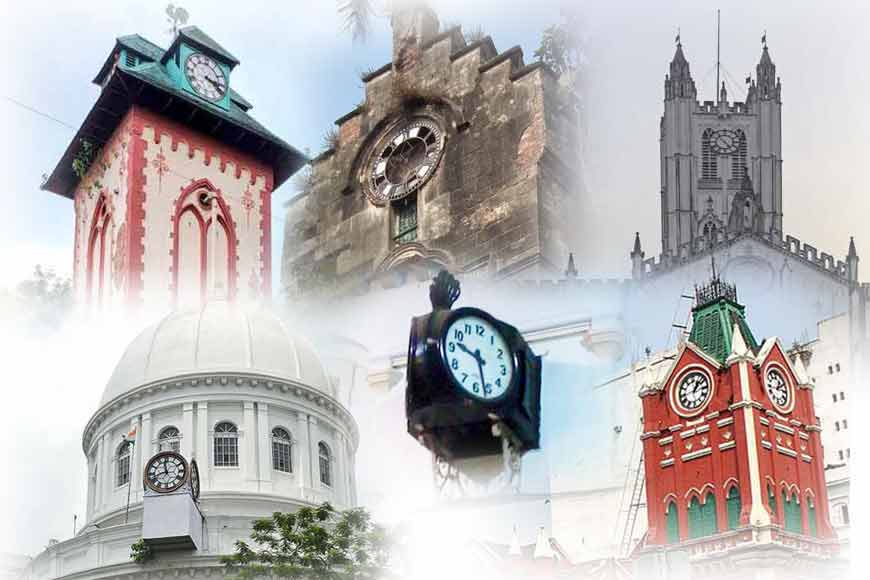
Rabindranath Tagore, in his poem, had dreamed of Kolkata moving below him at a sluggish pace. The British tried to ingrain the concept of timekeeping by erecting clock towers in different parts of their capital so as to discipline people into working as per time at market places or other public areas. The church used the bell towers, which later gave way to the clock towers, which rang to remind the masses of certain times of the day. In Calcutta, there was more colonial architectural splendour than in any other city.
Around the 11th and 20th centuries, hundreds of clock towers came up in cities across the world. Usually located in the town centre or next to a church, their purpose was to remind people of prayer times. The clock towers preceded the Bell Towers, which were used both in Europe as a way to call the faithful to prayers, summon people to organised work like a factory or railroad, inform people of an emergency or a death, or make official announcements related to the public at large.
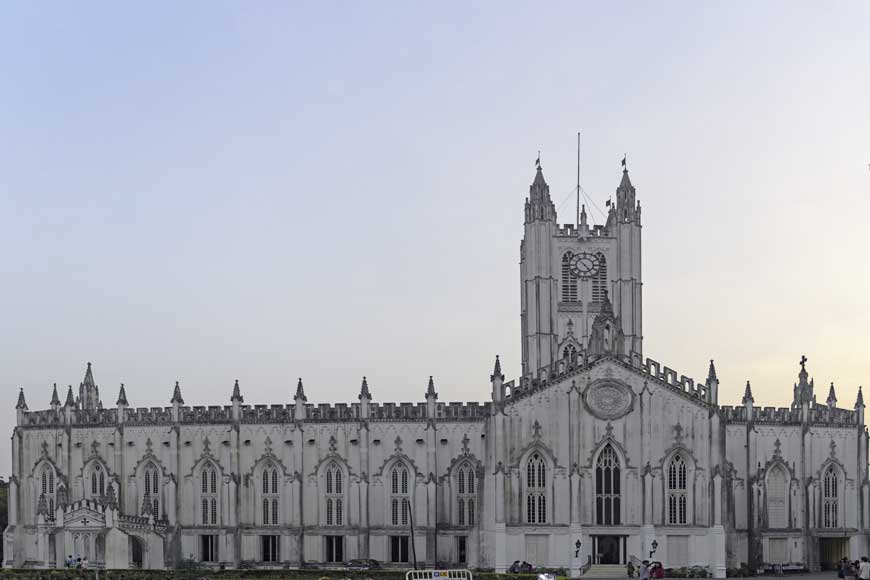
Europeans, especially the British, were obsessed with time-keeping, whereas the Chinese, Egyptians, Indians, and Greeks, who had invented and developed the first sundials and had been recording time since 3500 BC, didn’t give much importance to the process. Hence, the British erected some clock towers all over Kolkata, some of which are still working. Take, for example, the St. Paul’s Cathedral clock. The construction began in 1839 and was consecrated in 1847. The cathedral was so marvellous that Queen Victoria presented 10 pieces of silver-gilt plates for it. Made by Vulliamy, the royal clockmaker of London, the clock is similar to the one at Christ Church in Oxford. Inaugurated as the first episcopal church in the East, Queen Victoria sent a communion plate to Bishop Wilson during the inauguration ceremony. Originally, the church was 201 feet tall at the spire, but an earthquake in 1897 and another one in 1934 reduced it to 145 feet. It is 247 feet long and nearly 81 feet wide. The spire, which was damaged in 1934, was replaced by a new one influenced by the bell tower of Canterbury Cathedral. The Vulliamy family, the makers of the clocks in St. Paul’s Cathedral, were originally from Switzerland and were notable clockmakers in 18th- and 19th-century Britain.
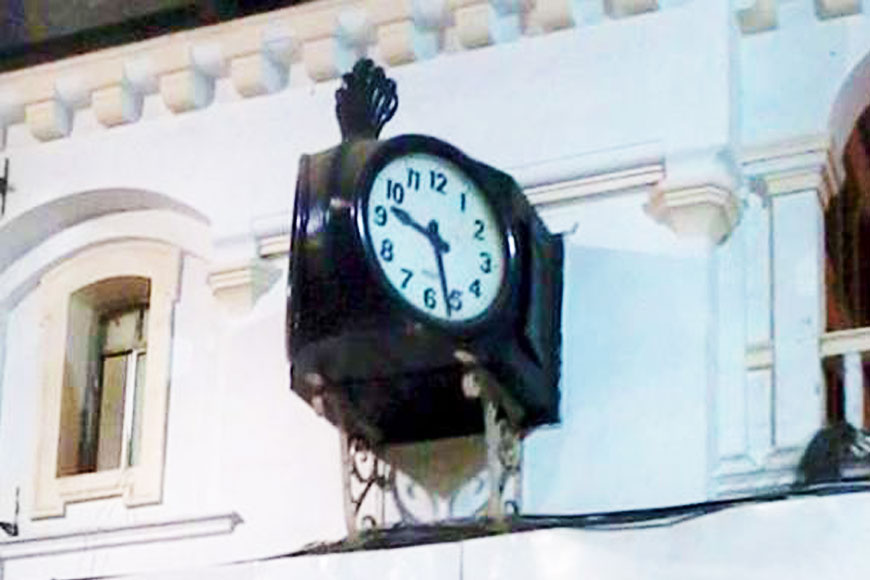
But the most iconic clock tower that still survives is the Boro Ghori at Howrah Station. Fondly called the “Big Ben” of Howrah by commuters, it was installed in 1926. Mounted on heavy wooden frames, the twin clocks were fashioned after the Big Ben of London. It has dials measuring 45 inches in diameter and an hour hand that is 18 inches long. The minute hand is 24 inches long.
Also read : Meet the Time-Keepers of Kolkata
Established in 1872 by John Thomas Gent, Gents of Leicester became a well-known manufacturer of electrical equipment in the United Kingdom. Their product range, in particular the electric clocks, is now sought after in the world of vintage decor due to their antique appearance and quality. Gents made a whole host of different designs intended for different purposes. Standard round wall clocks, square double-sided clocks, slave clocks, mains-powered clocks, and cast iron clocks for outdoor use, to name but a few,.
The most famous Gents of Leicester clock of all hangs proudly in London’s Waterloo Station—exactly where it was designed—and hopefully it will never be replaced! We wish the same for Boro Ghori at Howrah Station.
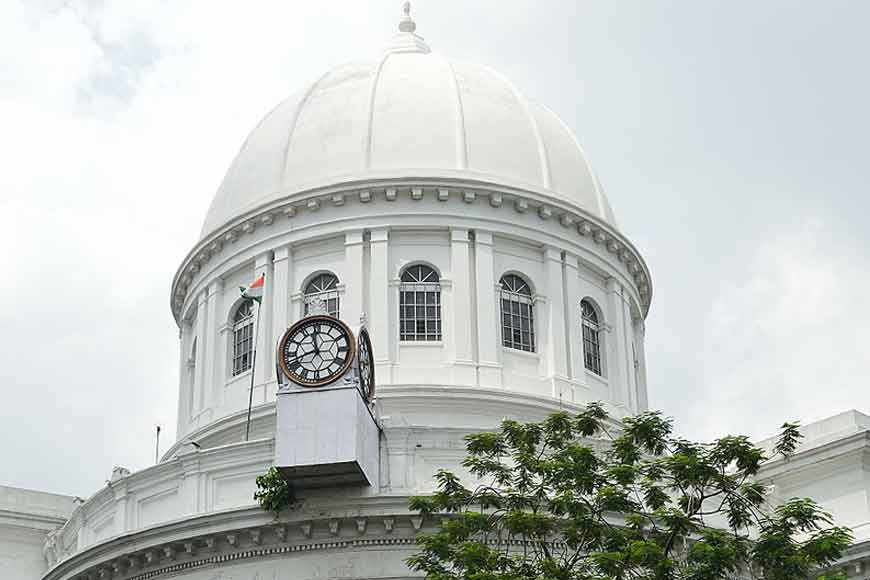
While the General Post Office, or GPO, clock is notable for its imposing high-domed roof, rising over 220 feet, with a clock made in the colonial style, the White Building is an outstanding example of Edwardian architecture that was popular in Britain between 1901 and 1914. Designed and built by Walter B. Granville in 1868, the clock was imported from London and cost approximately 7,000 rupees. The British had built clock towers in various bustling markets in Kolkata. This was primarily done because these spots attracted a huge congregation of people who wanted to know the time. In those days, very few could afford personal timepieces.
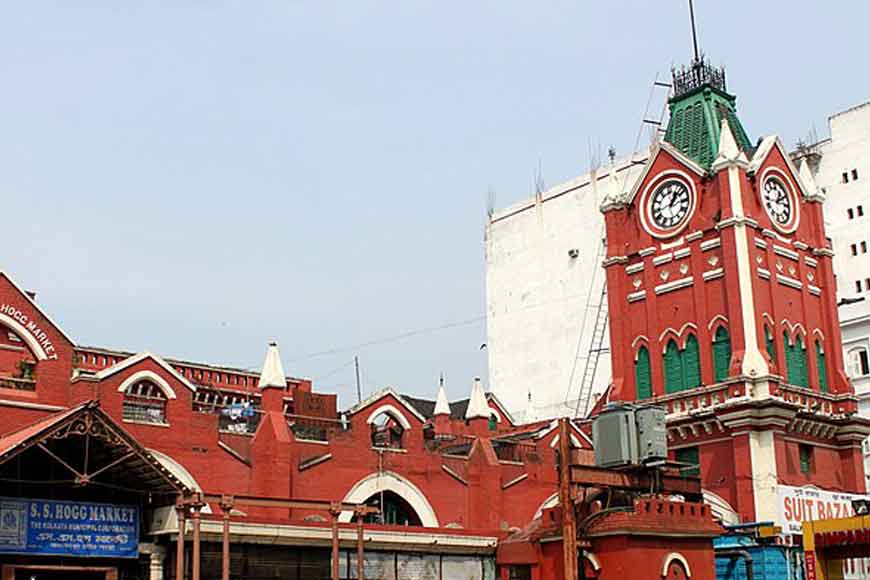
One such Bazaar clock tower that still shines in its brick-coloured tower house is the New Market clock. Some say that the clock tower was shipped from Huddersfield and installed in the year 1930. The clock had Westminster chimes and hourly dongs. Parts of the clock are missing, and though the restoration work for this clock tower with overgrown roots and weeds was taken up around 2019, not much change is visible. This Gillett & Johnston Clock was brought from the UK, and one mechanism works on all four clocks. The four clocks were made in British India, one in New Market, the second at the Shibpur Engineering College campus, and the other two in Chennai and Mumbai. Another place in Kolkata that has an old clock is Maniktala Market. One of the oldest markets in Kolkata, Maniktala Bazar, can easily be identified by its clock tower. No one, however, is sure about when it was installed.
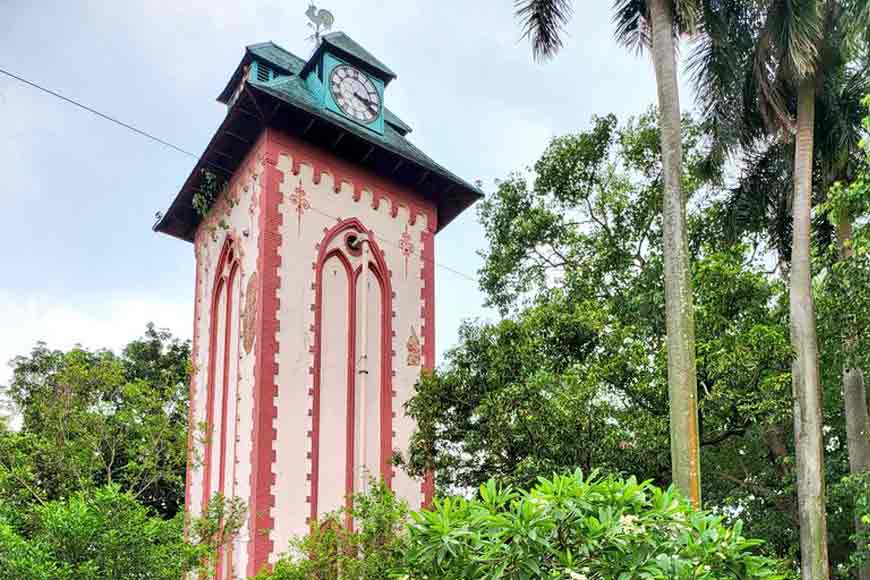
The other clock in Calcutta that lies in a very sorry state is the Clock Tower at Tagore Castle, a building that stands in a dilapidated state, losing all its past glory. The clock was imported from London. Jatindramohan Tagore in 1895 modelled the Tagore Castle in the fashion of Windsor Castle in England, with a 100-foot-high centre tower. The dilapidated castle stands in the Jorabagan area of Kolkata.
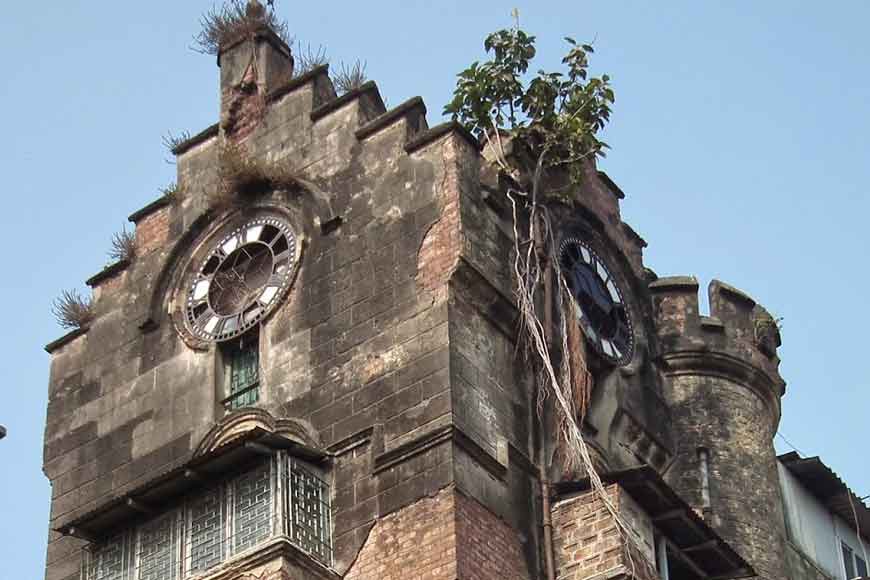
Other than these clocks in various public places in Kolkata, some private shops and buildings also have clocks. The iconic sweet shop of Bhim Chandra Nag on Nirmal Chandra Street in the Bowbazar area of North Calcutta is one of them. Renowned for inventing Ledikeni, Bhim Nag’s sweet shop is also famous for its Cooke and Kelvey clocks. In the year Bhim Chandra Nag invented the Ledikeni, a British silverware company called Cooke and Kelvey (founded by Thomas Cooke and Charles Kelvey) came to Calcutta. They made watches and precious stones, and they were also diamond merchants. The clock arrived in the 19th century, when British merchants were fast trading in these clocks, bringing them from England to the Indian markets.
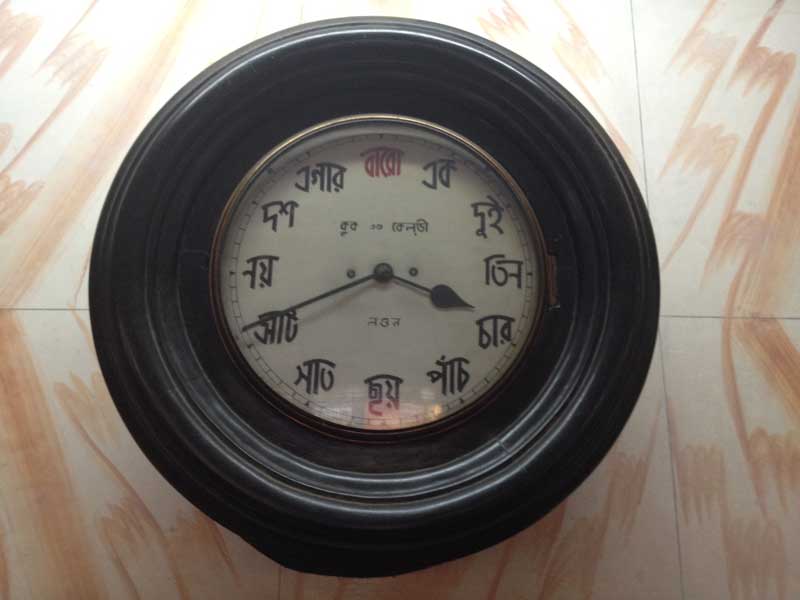
According to hearsay, Thomas Cooke paid a visit to Bhim Nag’s shop in 1858. Probably influenced by Bhim Nag’s newfound fame as the inventor of a candy made for Lady Canning’s birthday, he was overjoyed after tasting the sweetness. Cooke was surprised that such a large store had no clock and decided to gift one to Bhim Nag.










